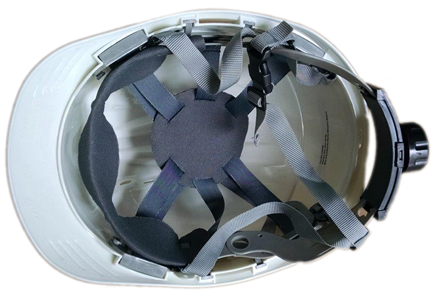Hard hats are often your first line of defense against serious head injuries when working in areas where there is a potential of falling objects. Hard hats symbolize safety, responsibility, and the commitment to protecting workers in high-risk industries like construction sites, manufacturing plants, mine sites, or in any other hazardous environments.
Why Use Hard Hats?
Hard hats are specifically designed to mitigate head injury risks by providing a protective barrier between the head and potential hazards. It may seem unnecessary when you’ve been working for many years accident-free, but it just takes a second to incur a serious head injury, leading to long-term disability or even death. Remember hard hats are engineered to absorb impact, resist penetration, and in some cases, offer protection against electrical shock.
What does a hard hat consist of?
A typical hard hat consists of two main components:
- Shell: The outside shells are usually made from high-density polyethylene (HDPE) or a polycarbonate resin as they are strong, easy to mold, lightweight, and do not conduct electricity. Acrylonitrile butadiene styrene (ABS) – strong resistance to physical impacts and corrosive chemicals. Fiberglass shell designed to withstand impact and distribute the force of a blow over a larger area to reduce the severity of injury.
- Fiberglass hard hats are the industry standard for mining or electrical workers. The material has a much higher temperature resistance while remaining light and durable.
- Suspension System: Inside the hard hat, the suspension system holds the shell away from the head, creating a buffer zone that absorbs shock and provides additional protection. This system typically includes straps and a headband that can be adjusted for a secure and comfortable fit.

Types of Hard Hats
Hard hats are classified into different types and classes based on the protection they offer:
- Type I: These hard hats protect against vertical impacts (from the top of the head). They are commonly used in the United States and Canada.
- Type II: Offering protection against both vertical and lateral impacts, Type II hard hats are more common in Europe and are gaining popularity in North America.
- Class G (General): Rated for impact protection and tested to withstand up to 2,200 volts of electrical current.
- Class E (Electrical): Designed for electrical work, these hard hats are tested to withstand up to 20,000 volts.
- Class C (Conductive): These hard hats do not provide protection against electrical hazards and are typically used in environments where electrical insulation is not required.

Applications of Hard Hats
Hard hats are used across a wide range of industries, each with its specific requirements:
- Construction: Perhaps the most common setting for hard hats, construction sites are filled with potential hazards like falling tools, debris, and structural elements. Hard hats are mandatory in most construction environments to protect workers from these dangers.
- Manufacturing: In manufacturing plants, workers are often exposed to machinery and equipment that pose a risk of head injury. Hard hats help protect against accidental impacts and falling objects.
- Electrical Work: Electricians and workers in similar fields require hard hats that offer protection against electrical shock. Class E hard hats are specifically designed for this purpose.
- Forestry and Agriculture: Workers in these industries often deal with heavy machinery and equipment. Hard hats help protect against falling branches, tools, and other hazards.

Maintenance and Inspection
Like all PPE, hard hats require regular maintenance and inspection to ensure they remain effective. Over time, exposure to sunlight, chemicals, and rough handling can degrade the materials in a hard hat. It’s important to inspect hard hats regularly for signs of damage, such as cracks, dents, or frayed suspension systems. Most manufacturers recommend replacing hard hats every five years, or sooner if they show signs of wear.
Conclusion
Hard hats are a simple yet vital piece of personal protective equipment. They play a crucial role in safeguarding workers from head injuries, which can be life-threatening or lead to long-term health issues. Whether you’re in construction, manufacturing, or any other hazardous field, wearing a hard hat is not just a requirement—it’s a commitment to your safety and the safety of those around you. Always choose the right type of hard hat for your work environment, and ensure it’s well-maintained to provide the protection you need.






